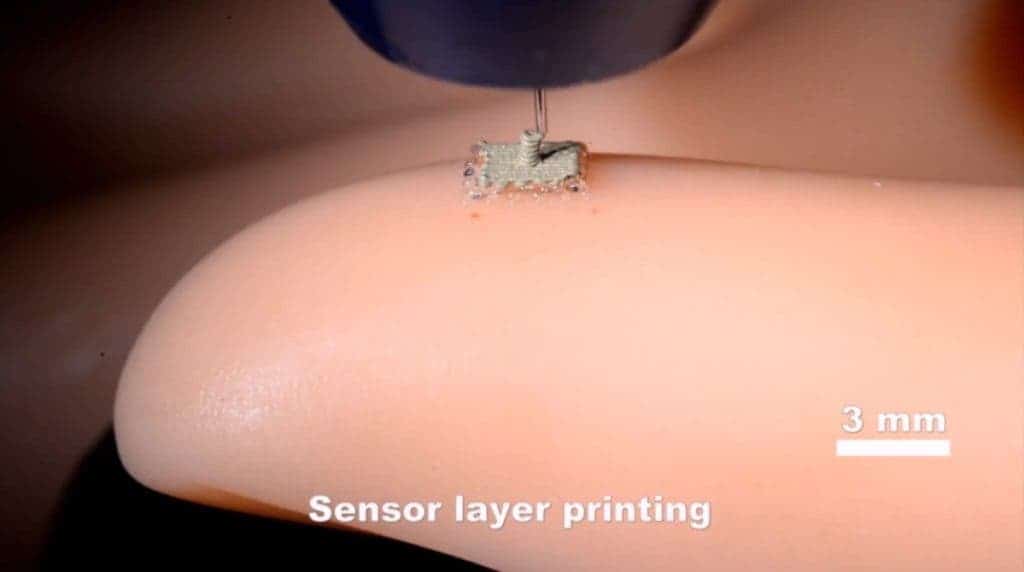University of Minnesota engineers have developed an innovative 3D printing process which can lay down stretchable electronics. The devices could be used to coat robots in a sensitive layer or to provide feeling-from-a-distance for surgeons.
The fabric-like material is created using a unique multifunctional 3D printer the team designed and built in their lab. It has four different nozzles and uses specialized inks to print the device up in layers. The process starts with the printer laying down an initial layer of silicone to give the device mechanical resilience, followed by two (one top and one bottom) conductive layers which act as electrodes, a coil-shaped pressure sensor, and a final ‘sacrificial’ layer to hold everything in place while they set. This last layer won’t be part of the final device but will be washed off in the final steps of the process.
Skin-deep
The device can ‘feel’ and relay pressure, functioning very much like out skin’s tactile sensors. And this outsourcing of tactile sense could lend itself well to many applications — for example, installing this bionic skin on surgical robots would enable surgeons to actually feel around during these procedures, instead of relying solely on cameras like they do now. It could also be used to give robots a sense of touch, helping them walk or better interact with the environment.
But one of the most exciting aspects of this printing process is that the layers are fully flexible and the whole printing process can be performed at room temperature. Each of the layers can also stretch up to three times their original size. Taken together, this means that unlike conventional 3D printing systems — which use hot, molten materials — the team’s device can print directly on live human skin. The layers are also flexible and resilient enough not to hinder motion or break during use. Here’s the printer in action on a dummy.
Michael McAlpine, a University of Minnesota mechanical engineering associate professor and lead researcher on the study says the technology could eventually lead to wearable electronics to perform a wide range of tasks, from monitoring a user’s health all the way to protecting soldiers from explosives of chemicals in combat.
“While we haven’t printed on human skin yet, we were able to print on the curved surface of a model hand using our technique,” McAlpine said. “We also interfaced a printed device with the skin and were surprised that the device was so sensitive that it could detect your pulse in real time.”
“This is a completely new way to approach 3D printing of electronics,” he adds. “We have a multifunctional printer that can print several layers to make these flexible sensory devices. This could take us into so many directions from health monitoring to energy harvesting to chemical sensing.”
Another advantage of the bionic skin is that every step of manufacturing is built into the current process, so there’s no need to scale anything up for industrial production. The skin is ” ready to go now,” according to McAlpine.
Next, the team plans to expand the process to include semiconductor inks and work on printing on a real body.
The full paper “3D Printed Stretchable Tactile Sensors” has been published in the journal Advanced Materials.










